|
Rispondi |
Messaggio 1 di 45 di questo argomento |
|
La Kaaba en la Meca - Es la hora del crepúsculo en la ciudad de Bagdad...
por Bibiana Bonmatí
11-06-2003
Es la hora del crepúsculo en la ciudad de Bagdad. El moecín sube al minarete y grita “Allaahu Akbar...” (“Alá es el más grande...”). Es el adhán, la llamada al Salat Maghrib. Los musulmanes de la ciudad dejan sus tareas y se dirigen a la mezquita. Mirando al mihrab, rezan la primera oración del día. Aunque este acto no parezca tener nada que ver con la astronomía o la ciencia, si nos remontamos en el tiempo vemos que está estrechamente relacionado.
La historia se inicia en el año 632 d.C., con la muerte del Profeta Muhammad (Mahoma). Éste fue el principio del islamismo, que unió a la mayoría de los pueblos árabes en una sola fe. Los ritos de esta nueva religión requieren conocimientos astronómicos y matemáticos complejos. Las oraciones se realizan a ciertas horas, que vienen determinadas por el camino del Sol a lo largo del día, y el orador debe orientarse a la Kaaba, que es la mezquita sagrada de la ciudad de la Meca.
Esta religión se extendió por la India, Asia Central y África hasta llegar a Europa. Por tanto, necesitaba establecer la dirección a la Meca en cada una de las ciudades. Para encontrar esta dirección sagrada se debían determinar latitudes y longitudes de cada lugar sin olvidarnos de ¡que la Tierra es redonda! El problema, pues, era básicamente matemático y de astronomía esférica.
En cada mezquita, una persona -el muecín-, se encarga de controlar las horas y hacer la llamada a la oración. En el Islam se realizan cinco Salats (oraciones) al día. La determinación de las horas depende de la posición del Sol en el cielo. Con el ocaso empieza un nuevo día. En es el momento de la primera oración, llamada Salat Maghrib. La segunda, Salat Isha, coincide con la caída de la noche. La tercera, Salat al Fajr, es al amanecer. La cuarta coincide con el momento en que el Sol cruza el meridiano, y se conoce como Salat Duhr. La quinta y última del día, Salat Asr, se realiza, en algunos lugares, cuando el tamaño de la sombra de un objeto es el doble del tamaño verdadero.
La Kaaba representa la primera casa de la humanidad. Se dice que su origen se remonta a Adán, a la creación del ser humano. Posteriormente, Noé la salvó del diluvio y Abraham la reconstruyó. Con anterioridad, los primeros árabes islámicos al rezar miraban en dirección Al-Quds (Jerusalén), y fue con el Corán cuando se estableció finalmente la Kaaba como nuevo lugar hacia el que rezar.
La Kaaba se describe como el motor inmóvil de una “galaxia humana” que gravita alrededor de ella desde hace miles de años, día y noche. Esta comparación se debe a que la Meca es la ciudad a donde suele hacerse el peregrinaje que han de realizar los musulmanes al menos una vez en la vida. Al llegar a la Kaaba, los fieles dan vueltas alrededor formando una “galaxia humana”. Es la casa alrededor de la cual giran los peregrinos como giran los planetas alrededor del Sol. Los fieles se mueven en sentido contrario al de las agujas del reloj: como si se remontaran al pasado, al tiempo de los profetas. Además, debido a la gran expansión que tuvo el Islam, siempre en algún punto del mundo había alguna persona mirando a la Kaaba para la oración.
El diseño de la Kaaba, anterior a la llegada del Islam, también sigue criterios astronómicos. Las paredes y esquinas están dirigidos al orto y ocaso del Sol y a ciertas estrellas fijas. La base de la Kaaba, que es rectangular, tiene su eje mayor apuntando a la estrella Canopus (estrella alfa de la constelación de la Quilla), y el eje menor a la salida del Sol de verano y al ocaso de invierno. Estas orientaciones estaban asociadas a fenómenos meteorológicos, como los vientos y las lluvias.
En cualquier caso, la cuestión importante era la determinación de la Quibla: dirección desde cualquier lugar del mundo hacia la Kaaba. Así pues, el problema básico era determinar la latitud del lugar, la de la Meca, y la diferencia longitudinal.
En el año 1000, Ibn-shuqara, un estudiante de religión de Yemen, inventó tres esquemas sobre la sagrada geografía con el mundo dividido en 8, 11, y 12 sectores alrededor de la Kaaba. En 1200, las versiones más simples de su esquema de los 12 sectores aparecen en los trabajos geográficos populares de Yaqut al-Rumi. Cincuenta años más tarde, Al-qaswini contribuyó a estos estudios y, en 1400, Al-qalqashandi realizó una enciclopedia sobre este tema. Del siglo XV al siglo XIX, proliferaron distintos esquemas de entre 8 y 72 divisiones del mundo alrededor de la Kaaba.
Poco a poco se fue afinando el cálculo de la Quibla para cada grado de latitud y diferencia de longitud desde La Meca, basadas en aproximaciones y en fórmulas exactas. Numerosos científicos musulmanes discutieron el problema presentando diversas soluciones. Mediante trigonometría esférica, redujeron problemas de tres dimensiones a dos, resolviéndolos por geometría o trigonometría plana. También, formularon soluciones utilizando instrumentos de cálculo, una de las más finas de la matemática medieval fue realizada en Damasco en el siglo XIV por Al-halili.
Para que los fieles supieran cuál era la Quibla se construía dentro de la mezquita el Mihrab, una hornacina generalmente con una ornamentación especial, distinguible de la del resto de la mezquita, hacia donde se orientaban los fieles. En algunos casos ocurría que en una mezquita, a medida que la determinación de la Quibla iba mejorando se construía más de un Mihrab.
En definitiva, las mezquitas no son solamente patrimonio de la religión y del arte ya que encierran bajo sus paredes un poquito de ciencia.
* Agradecimiento a Aahd Hagar por la conferencia Astronomía medieval islámica, impartida en el Instituto de Astrofísica de Canarias (IAC).
|
|
|
|
Rispondi |
Messaggio 16 di 45 di questo argomento |
|
Argo Navis
Jason's Ship
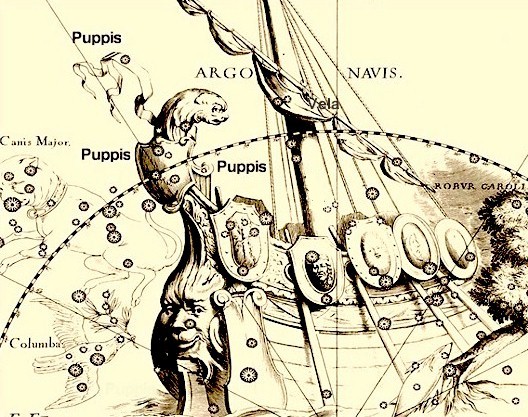 Hevelius, Firmamentum, 1690. The Ship is said to be moving stern-forward
"Then famed Argo, raised to the skies from the sea which it was the first to cross, occupies the heaven it earned through grievous perils in a bygone age, made a god for having given safety to gods" [Manilius, Astronomica, book 1, p.37].
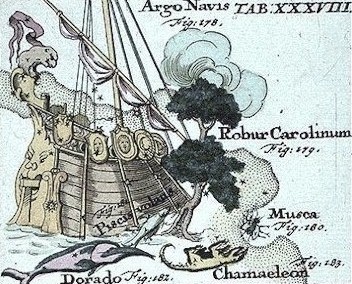 Johann Rost, Atlas portatalis coelestis, 1723 1 Johann Rost, Atlas portatalis coelestis, 1723 1Argo Navis is no longer an officially recognized constellation, it has been split up into three constellations; Carina the Keel, Vela the Sails, Puppis the Stern, plus a subordinate division of Argo now called Pyxis Nautica, the Nautical Box or Mariner's Compass, and which used to be called Malus, the Mast. In Greek Mythology Argo Navis represents the Ship used by Jason and fifty Argonauts to sail to fetch the Golden Fleece from Colchis (Iolcus) in the Black Sea. The Argo was built by the shipwright Argos or Argus. It was built at the port of Pagasae, using timber from nearby Mount Pelion.
Most of what we know about the Argo comes from the Greek poet Apollonius Rhodius, 3rd century B.C. from his epic poem, The Argonautica, a translation of which can be read online: http://omacl.org/Argonautica/
"Ancient authors were divided about the origin of the name of the ship. Some ascribed it to the name of the person who built it, Argus, son of Phrixus; others to the Greek word argos, 'swift', as being a light sailor; others to the city of Argos, where they suppose it was built; yet others to the Argives, who went on board it, according to the distich quoted from ancient Roman statesman Cicero, in his first Tusculan" [1].
The -naut of argonaut and the Navis of Argo Navis come from the same indo-European root *náu- 'Boat or ship'. Derivatives: naval, nave¹ (from Latin navis), navicular bone (also called scaphoid; shaped like a boat), navigate, navy, navy, nausea, nautical, noise, aeronaut, aquanaut, Argonaut, astronaut, cosmonaut, from Greek naus, ship, and nautes, sailor. [Pokorny 1. naus- 755. Watkins] The color navy derived from the navy uniforms worn in the navy. [These words are not related to the word 'navel' meaning umbilicus.]
Argo has been identified with a number of arks (the word 'ark' might also relate to the constellation Ara?):
"Egyptian story said that it was the ark that bore Isis and Osiris over the Deluge; while the Hindus thought that it performed the same office for their equivalent Isi and Iswara. And their prehistoric tradition made it the ship Argha for their wandering sun, steered by Agastya, the alpha star of Carina, Canopus. In this Sanskrit argha we perhaps may see our title" [Star Names].
Canopus is the alpha star of Carina. Plutarch says:
"Moreover, they give to Osiris the title of general, and the title of pilot to Canopus, from whom they say that the star derives its name; also that the vessel which the Greeks call Argo, in form like the ship of Osiris, has been set among the constellations in his honour, and its course lies not far from that of Orion and the Dog-star; of these the Egyptians believe that one is sacred to Horus and the other to Isis." [Plutarch, Moralia]
Christian legend identifies the constellation as Noah's Ark:
"The biblical school of course called it Noah’s Ark, the Arca Noachi, or Archa Noae as Bayer wrote it; Jacob Bryant, the English mythologist of the last century, making its story another form of that of Noah. Indeed in the 17th century the Ark seems to have been its popular title" [Star Names].
Nature gives hints on how to build a ship:
"Learn of the little nautilus to sail, Spread the thin oar, and catch the driving gale. [Line 177, An Essay on Man, a poem by Alexander Pope, 1733.]
The argonauts (genus Argonauta, the only extant genus in the Argonautidae family) are a group of pelagic octopuses, the Nautilus, Argonaut, or sailor-fish, a shell-fish found in the Mediterranean and in the Indian Ocean, and usually at the bottom of the sea, yet is able to rise to the surface, which it is fond of doing in calm weather. The shell is so thin that it is called the paper Nautilus. It lies on its back floating on the water. It employs some of its arms as oars to make progress, but if a gentle breeze arises it raises two of them upright, and extending them, spreads the membrane between them into a sail, which catches the wind ; its other arms hang out as a rudder to steer it the way it wishes [Significant etymology]. Female argonauts produce a laterally-compressed calcareous eggcase in which they reside. This "shell" has a double keel fringed by two rows of alternating tubercles.
The astrological influences of the constellation given by Manilius:
"Lord of the flock and conqueror of the sea, to which, a horn lost and robbed even of its fleece, it gave its burden [Helle] and a name, the Ram [Aries], which bade the magic arts of Colchian Medea (who married Jason) journey to Iolcos (Colchis) and spread her poisons throughout the world, even now draws Argo by the poop to its side, as though still on the seas, through the stars on its right [translator's note: An error: Argo is a southern constellation and rises to the left of the zodiac, but never contemporaneously with Aries]. But the foremost part of the poop emerges to show its fires only when the Ram has brought four degrees of his countenance above the horizon.
"Whoever is born on earth at the rising of Argo will be the captain of a ship; holding fast to his helm, he will forsake dry land for the sea and pursue his fortune with the winds; he will crave to traverse the entire ocean with his fleet, visit foreign climes and the deep Phasis, and better the speed of Tiphys towards the rocks (the Symplegades). Take away the births of men situated beneath this constellation, and you will take away the Trojan war and the fleet which both set sail and made land fall with bloodshed (of Iphigenia and Erotenlaus); then will no Xerxes launch Persia on the main or open up a new sea (by cutting a canal through Athos) and cover over the old (by the vastness of his fleet, some interpreters see an allusion to the bridging of the Hellespont, but Housman considers this unlikely); no reversal of Salamis at Syracuse will overwhelm Athens, nor will Punic prows ride every sea, the world within Actium's bays hang in the balance between opposing forces, and heaven's destiny float at the mercy of the waves. Men born under Argo are the guides who guide our ships over the trackless deep; it is through them that land meets land and the whole world's wares are summoned with the winds to supply men's divers needs". [Manilius, Astronomica, book 5, p.303].
© Anne Wright 2008.
| In 1763 the French cartographer De Lacaille divided the larger constellation of Argo Navis into its constituent sections, Carina, Puppis, Pyxis, and Vela. |
| Fixed stars in Carina the Keel |
| Star |
1900 |
2000 |
R A |
Decl 2000 |
Lat |
Mag |
Sp |
| Canopus alpha (α) |
13CAN35 |
14CAN58 |
6h 23m 57.1s |
-52° 41' 45" |
-75 49 50 |
-0.70 |
F0 |
| chi (χ) |
29LEO22 |
00VIR45 |
7h 56m 46.7s |
-52° 58' 56" |
-70 19 46 |
3.60 |
B3 |
| Avior epsilon (ε) |
21VIR47 |
23VIR08 |
8h 22m 30.8s |
-59° 30' 35" |
-72 40 48 |
1.74 |
K0 |
| Tureis iota (ι) |
03LIB58 |
05LIB20 |
9h 17m 5.4s |
-59° 16' 31" |
-67 36 02 |
2.25 |
F0 |
| Foramen eta (η) |
20LIB47 |
22LIB09 |
10h 45m 3.6s |
-59° 41' 3" |
-58 55 09 |
1.90 var |
P |
| upsilon (υ) |
21LIB31 |
22LIB54 |
9h 47m 6.1s |
-65° 4' 19" |
-67 29 43 |
3.15 |
F0 |
| Miaplacidus beta (β) |
00SCO37 |
01SCO58 |
9h 13m 12s |
-69° 43' 2" |
-72 13 48 |
1.80 |
A0 |
| omega (ω) |
06SCO04 |
07SCO27 |
10h 13m 44.2s |
-70° 2' 17" |
-67 22 39 |
3.56 |
B8 |
| Fixed stars in Puppis the Stern |
| Star |
1900 |
2000 |
R A |
Decl 2000 |
Lat |
Mag |
Sp |
| nu (ν) |
15CAN46 |
17CAN09 |
6h 37m 45.7s |
-43° 11' 46" |
-66 04 49 |
3.18 |
B8 |
| tau (τ) |
26CAN21 |
27CAN44 |
6h 49m 56.2s |
-50° 36' 53" |
-72 51 29 |
2.83 |
G8 |
| pi (π) |
28CAN56 |
00GEM19 |
7h 17m 8.6s |
-37° 5' 51" |
-58 31 49 |
2.74 |
K5 |
| L (L1) |
02LEO03 |
03LEO26 |
7h 13m 13.4s |
-45° 10' 59" |
-65 58 08 |
var |
M5 |
| Azmidiske xi (ξ) |
04LEO39 |
06LEO02 |
7h 49m 17.7s |
-24° 51' 35" |
-44 56 40 |
3.47 |
G6 |
| sigma (σ) |
07LEO19 |
08LEO42 |
7h 29m 13.8s |
-43° 18' 5" |
-63 46 54 |
3.27 |
M0 |
| rho (ρ) (15 Puppis) |
10LEO01 |
11LEO24 |
8h 7m 32.6s |
-24° 18' 15" |
-43 16 29 |
2.88 |
F5 |
| Naos zeta (ζ) |
17LEO10 |
18LEO33 |
8h 3m 35.1s |
-40° 0' 12" |
-58 21 06 |
2.27 |
O5 |
| Fixed stars in Pyxis the Mariner's Compass |
| Star |
1900 |
2000 |
R A |
Decl 2000 |
Lat |
Mag |
Sp |
| gamma (γ) |
24LEO06 |
25LEO29 |
8h 50m 31.9s |
-27° 42' 36" |
-43 17 42 |
4.19 |
K4 |
| alpha (α) |
25LEO08 |
26LEO31 |
8h 43m 35.5s |
-33° 11' 11" |
-48 55 34 |
3.70 |
B1 |
| beta (β) |
25LEO26 |
26LEO49 |
8h 40m 6.2s |
-35° 18' 30" |
-51 09 30 |
4.04 |
G5 |
| Fixed stars in Vela the sail |
| Star |
1900 |
2000 |
R A |
Decl 2000 |
Lat |
Mag |
Sp |
| gamma (γ) |
25LEO59 |
27LEO22 |
8h 9m 32s |
-47° 20' 12" |
-64 28 44 |
1.70 var |
B3 |
| Alsuhail lambda (λ) |
09VIR49 |
11VIR11 |
9h 7m 59.8s |
-43° 25' 57" |
-55 52 21 |
2.22 |
K4 |
| psi (ψ) |
13VIR22 |
14VIR45 |
9h 30m 42s |
-40° 28' 0" |
-51 09 53 |
3.64 |
A7 |
| delta (δ) |
17VIR35 |
18VIR58 |
8h 44m 42.2s |
-54° 42' 30" |
-67 11 51 |
2.01 |
A0 |
| q |
25VIR37 |
27VIR00 |
10h 14m 44.2s |
-42° 7' 19" |
-48 15 31 |
4.09 |
A2 |
| Markeb kappa (κ) |
27VIR31 |
28VIR54 |
9h 22m 6.8s |
-55° 0' 39" |
-63 43 16 |
2.63 |
B3 |
| phi (φ) |
04LIB35 |
05LIB58 |
9h 56m 51.8s |
-54° 34' 4" |
-59 56 56 |
3.70 |
B7 |
| mu (μ) |
09LIB08 |
10LIB31 |
10h 46m 46.2s |
-49° 25' 12" |
-51 05 10 |
2.84 |
G5 |
 Urania's Mirror 1825 Urania's Mirror 1825
Argo Navis, the Ship Argo, generally plain Argo, — erroneously Argus, from confusion with its genitive case (Argus Panoptes, Argus "all eyes"), — and Navis, is the German Schiff, the French Navire Argo, and the Italian Nave Argo.
It lies entirely in the southern hemisphere, east of Canis Major, south of Monoceros and Hydra, largely in the Milky Way, showing above the horizon of New York city only a few of its unimportant stars; but it covers a great extent of sky, nearly seventy-five degrees in length, — Manilius calling it nobilis Argo, — and contains 829 naked-eye components. The centre culminates on the 1st of March.
La Caille used for it nearly 180 letters, many of them of course duplicated, so that although this notation was adopted in the British Association Catalogue, recent astronomers have subdivided the figure for convenience in reference, and now know its three divisions as Carina, the Keel, with 268 stars, Puppis, the Stern, with 313, and Vela, the Sail, with 248. This last is the German Segel.
La Caille, moreover, formed from stars in the early subordinate division Malus, the Mast, Pyxis Nautica, the Nautical Box or Mariner's Compass, the German See Compass, the French Boussole or Compas de Mer, and the Italian Bussola; and this is still recognized by some good astronomers as Pyxis.{Page 65} From other stars Bode formed Lochium Funis, his Logleine, our Log and Line, now entirely fallen into disuse.
The Ship appears to have no bow, thus presenting the same sectional character noticeable in Equuleus, Pegasus, and Taurus, and generally is so shown on the maps. It was in reference to this that Aratos wrote:
"Sternforward Argo by the Great Dog's tail
Is drawn; for hers is not a usual course,
But backward turned she comes, as vessels do
When sailors have transposed the crooked stern
On entering harbour; all the ship reverse,
And gliding backward on the beach it grounds.
Sternforward thus is Jason's Argo drawn.
This loss of its bow is said to have occurred when Argo
"pass'd Through Bosporus betwixt the justling rocks — "
the Symplegades, the Cyanean (azure), or the Planctae Rocks at the mouth of the Euxine Sea. Yet Aratos may have thought it complete, for he wrote: "All Argo stands aloft in sky," and
"Part moves dim and starless from the prow
Up to the mast, but all the rest is bright;"
and it has often been so illustrated and described by artists and authors. The Alfonsine Tables show it as a complete double-masted vessel with oars, and Lubienitzki, in the Theatrum Cometicum of 1667, as a three-masted argosy with a tier of ports and all sails set full to the wind.
Mythology insisted that it was built by Glaucus, or by Argos, for Jason, leader of the fifty Argonauts, whose number equaled that of the oars of the ship, aided by Pallas Athene, who herself set in the prow a piece from the speaking oak of Dodona; the Argo being "thus endowed with the power of warning and guiding the chieftains who form its crew." She carried the famous expedition from Colchis in Thessaly to Aea in Colchis, (Colchis was the district along the eastern shore of the Euxine Sea, now Mingrelia.] in search of the golden fleece, and when the voyage was over Athene placed the boat in the sky.
Another Greek tradition, according to Eratosthenes, asserted that our constellation represented the first ship to sail the ocean, which long before {Page 66} Jason's time carried Danaos with his fifty daughters from Egypt to Rhodes and Argos, and, as Dante wrote, "Startled Neptune with the aid of Argo."
Egyptian story said that it was the ark that bore Isis and Osiris over the Deluge; while the Hindus thought that it performed the same office for their equivalent Isi and Iswara. And their prehistoric tradition made it the ship Argha for their wandering sun, steered by Agastya, the star Canopus. In this Sanskrit argha we perhaps may see our title; but Lindsay derives Argo from arek, a Semitic word, used by the Phoenicians, signifying "long," this vessel having been the first large one launched.
Sir Isaac Newton devoted much attention to the famous craft, fixing the date of its building about 936 B.C., forty-two years after King Solomon.
With the Romans it always was Argo and Navis, Vitruvius writing Navis quae nominatur Argo: but Cicero called it Argolica Navis and Argolica Puppis; Germanicus, Argoa Puppis; Propertius, the elegiac poet of the 1st century before our era, Iasonia Carina; Ovid, Pagasaea Carina and Pagasaea Puppis, from the Thessalian seaport where it was built; Manilius, Ratis Heroum, the Heroes' Raft, "which now midst Stars doth sail"; and others, Navis Jasonis, or Osiridis, Celox Jasonis, Carina Argoa, Argo Ratis, and Navigium Praedatorium, the Pirate Ship. While somewhat similar are Currus Maris, the Sea Chariot, the Currus Volitans of Catullus, who said that in Egypt it had been the Vehiculum Lunae.
It also was Equus Neptunias; indeed Ptolemy asserted that it was known as a Horse by the inhabitants of Azania, the modern Ajan, on the northeastern coast of Africa, south of Cape Gardafui.
The Arabians called it Al Safinah, a Ship, and Markab, something to ride upon, that two or three centuries ago in Europe were transcribed Alsephina and Merkeb.
Grotius mentioned Cautel as a title for Puppis, "from the Tables," but he added Hoc quid sit nescio.
The biblical school of course called it Noah’s Ark, the Arca Noachi, or Archa Noae as Bayer wrote it; Jacob Bryant, the English mythologist of the last century, making its story another form of that of Noah. Indeed in the 17th century the Ark seems to have been its popular title.
In Hewitt's Essays we find a reference to "the four stars which marked the four quarters of the heavens in the Zendavesta, the four Loka-palas, or "nourishers of the world," of the Hindus; and that author claims these for {Page 67} Sirius in the east, the seven stars of the Greater Bear in the north, Corvus in the west, and Argo in the south. He gives the latter's title as Sata Vaesa, the One Hundred Creators; all these imagined as forming a great cross in the sky. The differing Persian conception of this appears in the remarks on Regulus, — alpha Leonis.
The Chinese asterism Tien Meaou probably was formed from some components of Argo.
The constellation is noticeable in lower latitudes not only from its great extent and the splendor of Canopus, but also from possessing the remarkable variable eta (eta Carina, Foramen) and its inclosing nebula.
Near the star s' Carinae appeared, between March 5 and April 8, 1895, a nova with a spectrum similar to those of the recent novae in Auriga and Norma.
. . . like a meadow which no scythe has shaven,
Which rain could never bend or whirl-blast shake,
With the Antarctic constellations paven,
Canopus and his crew, lay the Austral lake.
--Percy Bysshe Shelley's The Witch of Atlas.
[ Star Names: Their Lore and Meaning, Richard H. Allen, 1889.]
|
|
|
|
Rispondi |
Messaggio 17 di 45 di questo argomento |
|
-
Haz hecho público que te gusta. Deshacer
-
Haz hecho público que te gusta. Deshacer
-
carlosnieto.com/.../constelacion-de-argo-navis-el-barco-de-jason/En caché
Haz hecho público que te gusta. Deshacer
-
elarcadelmisterio.blogspot.com/.../dioses-del-antiguo-egipcio-sabeiss....En caché
Haz hecho público que te gusta. Deshacer
-
Haz hecho público que te gusta. Deshacer
-
Haz hecho público que te gusta. Deshacer5 publicaciones - 3 autores - 12 Mar.
Para los antiguos egipcios esta constelación representaba el barco que transportó a Isis y Osiris sobre el diluvio, los ... Para los Hebreos era el Arca de Noé. La estrella más brillante de éstas 3 constelaciones es Canopus en ...
-
temakel.net/texmiteduniversal.htmEn caché
Haz hecho público que te gusta. Deshacer
-
www.alconet.com.ar/varios/.../egipto_y_el_diluvio_universal.htmlEn caché
Haz hecho público que te gusta. Deshacer
-
bibliotecas1978.wordpress.com/2012/07/12/En caché
Haz hecho público que te gusta. Deshacer
-
www.oocities.org/juancast/index21.htmlEn caché
Haz hecho público que te gusta. Deshacer
Anuncios relacionados con canopus arca de osiris Se mostraron estos anuncios debido a tus términos de búsqueda actuales.
-
Comprá Canopus ¡Consultá promociones y ofertas especiales!
-
www.pricedumper.com.ar/Osiris
Compra Osiris. ¡ Precio mínimo garantizado !
|
|
|
|
Rispondi |
Messaggio 18 di 45 di questo argomento |
|
EL MENSAJE 911, TIENE ORIGEN EN EL GRIAL (LLAVE DE SALOMON).CONEXION CON EL CATOLICISMO, ISLAM, DA VINCI E INDEPENDENCIA DE ESTADOS UNIDOS-ZOROBABEL (SEÑOR DE LOS ANILLOS)-RELACION CON JANUKAH
Hageo
2:1 En el mes séptimo, a los veintiún días del mes, vino palabra de Jehová por medio del profeta Hageo, diciendo: (21 DEL SEPTIMO MES/OSHANAH RABBAH)
2:2 Habla ahora a Zorobabel hijo de Salatiel, gobernador de Judá, y a Josué hijo de Josadac, sumo sacerdote, y al resto del pueblo, diciendo:
2:3 ¿Quién ha quedado entre vosotros que haya visto esta casa en su gloria primera, y cómo la veis ahora? ¿No es ella como nada delante de vuestros ojos?
2:4 Pues ahora, Zorobabel, esfuérzate, dice Jehová; esfuérzate también, Josué hijo de Josadac, sumo sacerdote; y cobrad ánimo, pueblo todo de la tierra, dice Jehová, y trabajad; porque yo estoy con vosotros, dice Jehová de los ejércitos.
2:5 Según el pacto que hice con vosotros cuando salisteis de Egipto, así mi Espíritu estará en medio de vosotros, no temáis.
2:6 Porque así dice Jehová de los ejércitos: De aquí a poco yo haré temblar los cielos y la tierra, el mar y la tierra seca;
2:7 y haré temblar a todas las naciones, y vendrá el Deseado de todas las naciones; y llenaré de gloria esta casa, ha dicho Jehová de los ejércitos. (La gloria tiene fuerte relacion con el septimo dia. ¿Hay un puente espiritual con la resurreccion de Lazaro?)
2:8 Mía es la plata, y mío es el oro, dice Jehová de los ejércitos. (LA PLATA ES LA LUNA Y EL ORO EL SOL)
2:9 La gloria postrera de esta casa será mayor que la primera, ha dicho Jehová de los ejércitos; y daré paz en este lugar, dice Jehová de los ejércitos.
2:10 A los veinticuatro días del noveno mes, en el segundo año de Darío, vino palabra de Jehová por medio del profeta Hageo, diciendo: (JANUKAH)
2:11 Así ha dicho Jehová de los ejércitos: Pregunta ahora a los sacerdotes acerca de la ley, diciendo:
2:12 Si alguno llevare carne santificada en la falda de su ropa, y con el vuelo de ella tocare pan, o vianda, o vino, o aceite, o cualquier otra comida, ¿será santificada? Y respondieron los sacerdotes y dijeron: No.
2:13 Y dijo Hageo: Si un inmundo a causa de cuerpo muerto tocare alguna cosa de estas, ¿será inmunda? Y respondieron los sacerdotes, y dijeron: Inmunda será.
2:14 Y respondió Hageo y dijo: Así es este pueblo y esta gente delante de mí, dice Jehová; y asimismo toda obra de sus manos; y todo lo que aquí ofrecen es inmundo.
2:15 Ahora, pues, meditad en vuestro corazón desde este día en adelante, antes que pongan piedra sobre piedra en el templo de Jehová.
2:16 Antes que sucediesen estas cosas, venían al montón de veinte efas, y había diez; venían al lagar para sacar cincuenta cántaros, y había veinte.
2:17 Os herí con viento solano, con tizoncillo y con granizo en toda obra de vuestras manos; mas no os convertisteis a mí, dice Jehová.
2:18 Meditad, pues, en vuestro corazón, desde este día en adelante, desde el día veinticuatro del noveno mes, desde el día que se echó el cimiento del templo de Jehová; meditad, pues, en vuestro corazón. (24 DEL NOVENO MES ES CHANUKAH/JANUKAH)2:19 ¿No está aún la simiente en el granero? Ni la vid, ni la higuera, ni el granado, ni el árbol de olivo ha florecido todavía; mas desde este día os bendeciré.
2:20 Vino por segunda vez palabra de Jehová a Hageo, a los veinticuatro días del mismo mes, diciendo:
2:21 Habla a Zorobabel gobernador de Judá, diciendo: Yo haré temblar los cielos y la tierra;
2:22 y trastornaré el trono de los reinos, y destruiré la fuerza de los reinos de las naciones; trastornaré los carros y los que en ellos suben, y vendrán abajo los caballos y sus jinetes, cada cual por la espada de su hermano.
2:23 En aquel día, dice Jehová de los ejércitos, te tomaré, oh Zorobabel hijo de Salatiel, siervo mío, dice Jehová, y te pondré como anillo de sellar; porque yo te escogí, dice Jehová de los ejércitos
 OBSERVEN 9-11 EN NUMEROS ROMANOS Y EL EXAGONO EN LA PARTE CENTRA. ES UNA OBVIA REFERENCIA A LA LLAVE DE DAVID/SALOMON/ESCALERA DE JACOB.
OSEA QUE LAS DOS TORRES GEMELAS SON UN SIMBOLISMO DE LAS DOS COLUMNAS DE HERCULES O DOS COLUMNAS DEL TABERNACULO/TEMPLO DE SALOMON QUE ERAN LAS DE JACHIN Y BOAZ. 1 DE REYES 7:21,22. Noten, incluso, que EL EXAGONO tambien es un CUBO/KAABA/LUGAR SANTISIMO DEL TABERNACULO/ NUEVA JERUSALEM.
EL POLO NORTE DE SATURNO TIENE FORMA CUBICO/HEXAGONAL.
rings of Saturn 
ANILLOS DE SATURNO
ANILLOS DEL SIGLO XV APROXIMADAMENTE. Noten que tienen el simbolo 9-11 en numeros romanos.
SATURNO TIENE RELACION CON EL 666 (666 TALENTOS DE ORO DEL REY SOLOMON=1 DE REYES 10:14)
1 REYES 10:14
258. 1 Reyes 10:14: El peso del ORO que Salomón tenía de renta cada año, era seiscientos sesenta y seis talentos de ORO;
2011. Apocalipsis 13:18: Aquí hay sabiduría. El que tiene entendimiento, cuente el número de la bestia, pues es número de HOMBRE. Y su número es seiscientos sesenta y seis.
LA "ESTRELLA DE DAVID" ES SIMBOLIZADA POR LA ESTRELLA DE 6 PUNTAS, ES EL MISMO REY SOLOMON. SOL-O-MON ADONDE EN EL CONTEXTO AL SUEÑO DE JOSE DE GENESIS 37, EL SOL ES DAVID Y LA LUNA ES BETZABE. CURIOSO QUE EL DIA 4 DE JULIO, EL DIA DE LA INDEPENDENCIA DE ESTADOS UNIDOS, EN EL SANTORAL CATOLICO ES EL DIA DE BETZABE. EN EL CUADRADO MAGICO, EL CUADRADO DEL SOL (NUMERO 666) LA SUMA EN CADA LINEA, YA SEA HORIZONTAL O VERTICAL DA 111. INSISTO, 111X6=666. Es curioso tambien que desde el 11 de septiember hasta el 31 de diciembre incluido tenemos 111 dias.


Noten que en este caso las doble xx tambien tienen la forma de LA ESCUADRA Y EL COMPAS, osea la ALQUIMIA, la escalera de JACOB. El mismo mensaje detras de SOL-O-MON tiene fuerte REFERENCIA A "LA ESCALERA DE JACOB", OSEA EL GRIAL. LA G CON REFERENCIA A GOD/DOG/GAD/GRIAL/GALAXY, es la misma ESCALERA DE JACOB. Todo esta detras del EXAGONO/CUBO/KAABA. El islam tambien tiene fuerte este mensaje. RECORDEMOS QUE LA MECA ESTA UBICADA, EN EL CONTEXTO AL PLANETA TIERRA, en funcion al NUMERO DE ORO PHI=1.618033. TODOS LOS CAMINOS CONDUCEN A ROMA. TODOS LOS CAMINOS CONDUCEN AL GRIAL. FATIMA, justamente fue la 11va hija de MAHOMA y el 911 gira alrededor de FATIMA.
CONEXION PIRAMIDE DE LOUVRE (666 CRISTALES) CON EL OBELISCO DE WASHINGTON D.C
VESICA PISCIS (NACIMIENTO DEL GRIAL)

There is a Bible that is ‘magically bound’ inside this square in Washington.It is the same Bible called ‘the Lost Symbol.’ But this Bible is only a small part—albeit a very important part—of the complete schematic of the Lost Symbol Diagram. When the entire picture is viewed as it was intended to be—all of the symbols and structures in Government Center as a single portraiture, as well as why they were designed and laid out the way they are—what emerges is the True Lost Symbol, an elaborate alchemical construct that can only be rightly understood within the historical meaning of the symbolism.
|
|
|
|
Rispondi |
Messaggio 19 di 45 di questo argomento |
|
Apocalipsis 21
1. Vi un cielo nuevo y una tierra nueva; porque el primer cielo y la primera tierra pasaron, y el mar ya no existía más. (Una referencia al tercer dia de la creacion. Es como una tipologia de Genesis 3, en el contexto al tercer dia)
2. Y yo Juan vi la santa ciudad, la nueva Jerusalén, descender del cielo, de Dios, dispuesta como una esposa ataviada para su marido. (JUAN SEA JUAN EL EVANGELISTA O SEA EL MISMO JUAN MARCOS, EL MENSAJE ESOTERICO ES CLARISIMO, OSEA UNA REFERENCIA AL SANTO GRIAL, OSEA JUAN MARCOS, EL LINAJE DE CRISTO Y MARIA MAGDALENA. ESTE ES OTRO NEXO DE JUAN MARCOS, OSEA LA CASA DEL APOSENTO ALTO, ADONDE FUE EL CENACULO EN EL MISMO JERUSALEN)
3. Y oí una gran voz del cielo que decía: He aquí el tabernáculo de Dios con los hombres, y él morará con ellos; y ellos serán su pueblo, y Dios mismo estará con ellos como su Dios.
4. Enjugará Dios toda lágrima de los ojos de ellos; y ya no habrá muerte, ni habrá más llanto, ni clamor, ni dolor; porque las primeras cosas pasaron.
5. Y el que estaba sentado en el trono dijo: He aquí, yo hago nuevas todas las cosas. Y me dijo: Escribe; porque estas palabras son fieles y verdaderas.
6. Y me dijo: Hecho está. Yo soy el Alfa y la Omega, el principio y el fin. Al que tuviere sed, yo le daré gratuitamente de la fuente del agua de la vida.
(EL SALMO 119, ESTA ESCRITO EN FUNCION A LAS 22 LETRAS HEBREAS. OSEA QUE EN UN CONTEXTO GRIEGO LA REFERENCIA AL ALFA Y EL OMEGA, ES EN EL CONTEXTO A LAS 22 LETRAS HEBREAS. EL DISEÑO DE LA TORRE EIFFEL EN FUNCION A DICHO SALMO, ES UNA REFERENCIA AL REGOCIJO EN LA TORA, OSEA EL OCTAVO DIA DE LA FIESTA DE LOS TABERNACULOS, LEVITICO 23:33, EN EL CUAL LOS JUDIOS LEEN EL SALMO 119.)
7. El que venciere heredará todas las cosas, y yo seré su Dios, y él será mi hijo. (Noten la similitud a JUAN 20, cuando CRISTO LE DICE A MARIA MAGDALENA, TIPO DE LA NUEVA JERUSALEN, VOY A MI PADRE Y VUESTRO PADRE A MI DIOS Y A VUESTRO DIOS. Es obvio el cumplimiento del PACTO ABRAHAMICO Y EL PACTO DAVIDICO DEL REINO MESIANICO DE 2 DE SAMUEL 7)
8. Pero los cobardes e incrédulos, los abominables y homicidas, los fornicarios y hechiceros, los idólatras y todos los mentirosos tendrán su parte en el lago que arde con fuego y azufre, que es la muerte segunda.
9. Vino entonces a mí uno de los siete ángeles que tenían las siete copas llenas de las siete plagas postreras, y habló conmigo, diciendo: Ven acá, yo te mostraré la desposada, la esposa del Cordero. (Noten la relacion de la COPA CON LA ESPOSA DEL CORDERO)
10. Y me llevó en el Espíritu a un monte grande y alto, y me mostró la gran ciudad santa de Jerusalén, que descendía del cielo, de Dios,
11. teniendo la gloria de Dios. Y su fulgor era semejante al de una piedra preciosísima, como piedra de jaspe, diáfana como el cristal. (LA "GLORIA DE DIOS" es una clave sabatica en contexto a EXODO 24 Y 25. Se vuelve a repetir el patron del libro de EFESO EN SU CAPITULO 5.)
12. Tenía un muro grande y alto con doce puertas; y en las puertas, doce ángeles, y nombres inscritos, que son los de las doce tribus de los hijos de Israel;
13. al oriente tres puertas; al norte tres puertas; al sur tres puertas; al occidente tres puertas.
14. Y el muro de la ciudad tenía doce cimientos, y sobre ellos los doce nombres de los doce apóstoles del Cordero.
GNOSIS=STAR GATE
NOSI=SION
ALSION (UBICADA A 33 GRADOS DESDE O DE ARIES)
ESTRELLA DE DAVID ES LA ALQUIMIA, OSEA LA UNION ENTRE EL HOMBRE Y LA MUJER
NOTEN LA ESTRELLA DE 5 PUNTAS EN EL CENTRO DEL EXAGONO CENTRO DE LA ESTRELLA DE 6 PUNTAS
EL EXAGONO TAMBIEN ES UNA REFERENCIA AL CUBO.
NOTEN QUE EN ESTA ESTRELLA DE 6 PUNTAS HAY 13 TRIANGULOS DE 5 PUNTAS, OSEA QUE NOS DA UN NEXO CON LAS 12 CONSTELACIONES DEL ZODIACO, CON LAS 12 HORAS DEL DIA, CON LAS 12 LUNAS QUE HAY EN EL CALENDARIO, CON LA SANTA CENA EN EL CONTEXTO A LOS 12 APOSTOLES, CON LAS 12 TRIBUS DE ISRAEL, CON EL MERIDIANO DE GREENWICH E INCLUSO CON ROSE LINE, ETC,ETC. TODO TIENE COMO PATRON LA ESTRELLA DE 6 PUNTAS, OSEA LA UNION ENTRE EL HOMBRE Y LA MUJER QUE LA TRADICION RELIGIOSA "OLVIDO". ESTE ES EL PATRON ESOTERICO DETRAS DE APOCALIPSIS 22 EN SU RELACION CON VENUS.
Observen una estrella de 6 puntas=6to dia=sex=six=VENUS/VIERNES (SEXTO DIA DE LA SEMANA)
OBSERVEN QUE TAMBIEN ES UN CUBO
6,7 Y 8
15. El que hablaba conmigo tenía una caña de medir, de oro, para medir la ciudad, sus puertas y su muro.
16. La ciudad se halla establecida en cuadro, y su longitud es igual a su anchura; y él midió la ciudad con la caña, doce mil estadios; la longitud, la altura y la anchura de ella son iguales. (LA CUBICACION DE UNA ESFERA. HAY UN OBVIO NEXO ALQUIMICO. LA GRAN CIUDAD ESTA DISEÑADA CON EL MISMO PATRON DE LA GRAN PIRAMIDE DE GIZE)

Figura 16. La relación geométrica entre el codo real y el metro.
LA CLAVE MATEMATICA ESTA EN LA ECUACION:
PI-(PHI ELEVADO AL CUADRADO)=CODO REAL
 |
|
3.1416 - 2.61800 = 0.5236
|
3.1416-2.618=0.5236
CODO REAL=.5236
ESTE ES EL SECRETO DEL NEXO "ROSE LINE", EN EL CONTEXTO AL METRO Y EN EL CONTEXTO A LA PIRAMIDE DE LOUVRE.
17. Y midió su muro, ciento cuarenta y cuatro codos, de medida de hombre, la cual es de ángel.
21. Las doce puertas eran doce perlas; cada una de las puertas era una perla. Y la calle de la ciudad era de oro puro, transparente como vidrio.
22. Y no vi en ella templo; porque el Señor Dios Todopoderoso es el templo de ella, y el Cordero.
23. La ciudad no tiene necesidad de sol ni de luna que brillen en ella; porque la gloria de Dios la ilumina, y el Cordero es su lumbrera. (Es como que hay una referencia esoterica a SOL-O-MON, OSEA JUAN 10:22)
|
|
|
|
Rispondi |
Messaggio 20 di 45 di questo argomento |
|
|
|
|
Rispondi |
Messaggio 21 di 45 di questo argomento |
|
-
www.philipcoppens.com/canopus_art1.html
We know that Sirius is linked with Isis, but what is Canopus? ... Orion and the Dog
star; the former of these the Egyptians hold sacred to Horus, the latter to Isis.
-
www.philipcoppens.com/canopus_art6.html
The book argued that Canopus was the forgotten “star” of the Egyptian ... in “The
Canopus Revelation” is shown to be erroneous: Orion was linked with Horus, ...
-
es.wikipedia.org/wiki/Vaso_canopo
Para otros usos de este término, véase Canopus. Los cuatro ... a unas
divinidades llamadas Hijos de Horus, quienes protegían su contenido de la
destrucción.
-
en.wikipedia.org/wiki/Canopic_jar
... the mistaken association by early Egyptologists with the Greek legend of
Canopus. ... Hieroglyphs for the four sons of Horus used on an Egyptian canopic
jar.
-
books.google.com.ar/books?isbn=1602060843
Horus was said to duplicate or rise again as the White God. ... Another name of
this dual divinity is Sut-Nub, the original of Sothis-Canopus in the stellar phase ...
-
www.shmoop.com/sons-horus/bottle-brigade.html
The Four Sons of Horus aren't the only gods who live in jars or bottles. Their
containers, called canopic jars, are actually named for the Greek demigod
Canopus.
-
books.google.com.ar/books?isbn=1317654854
Ё} www Herz: tatu, Horus lands, i.e., temple estates, кип: R. 9, 21, 23, 46. ä i р ä)
ä E 113.911, singers, С. 34. à ì ii ä) Ё Iles-tu» praised, О. 34. [l l] Q2 in мы, ...
-
books.google.com.ar/books?isbn=1317654919
... was made “ready for war with weapons of every kind by 23 “the rebels who
were in it—now they had corn- emitted great acts of sacrilege in the land of “
Horus, ...
-
books.google.com.ar/books?isbn=1616405570
Horus was said to duplicate or rise again as the White God. ... Another name of
this dual divinity is Sut-Nub, the original of Sothis-Canopus in the stellar phase; ...
-
books.google.com.ar/books?id=HDVbAAAAcAAJ
CANOPUS. 409] NICOLO. In France. Canopus in front ; the hend of Isis
decorated' with the lotus and two serpents on the forehead. NVater seems to run
from the ...
-
Anunciowww.urbix.com.ar/
Sepa como el movimiento peatonal Impacta sobre su Negocio
|
|
|
|
Rispondi |
Messaggio 22 di 45 di questo argomento |
|
EL NEXO HORUS, EN EL CONTEXTO A LA RESURRECCION DEL SEÑOR, ES OBVIO UNA REFERENCIA A LA KAABA ISLAMICA Y A LA ESTRELLA CANOPUS. EL TEMPLO DE HORUS EN EDFU, ESTABA ORIENTADO HACIA DICHA ESTRELLA, QUE APARENTEMENTE TIENE UN NEXO CON EL ARCA DE NOE. HORUS, TIENE UN FUERTE NEXO EN ESE CONTEXTO CON REFERENCIA AL ORIGEN DE LA HORA, EN EL MARCO A DICHA RESURRECCION.
|
|
|
|
Rispondi |
Messaggio 23 di 45 di questo argomento |
|

Diluvio de Noé
La leyenda del Diluvio de Noé comienza en Acuario durante la era astrológica de Tauro, y sigue la trayectoria del sol a través de la eclíptica de Acuario a Piscis a Aries a Tauro a Géminis. Para mayor referencia, véase el Edén para Babel y un mapa de la Zodiac .
Primera Imagen
Noé personifica Acuario del Waterman.
9 Estas son las generaciones de Noé. Noé era un hombre justo y honrado en su generación; Noé caminó con Dios. (Génesis 6: 9)
Los animales entraron en el arca de dos en dos.
9 de dos en dos, macho y hembra, entró en el arca con Noé, como mandó Dios a Noé. (Génesis 7: 9)
Cuando el sol pasa a Aries, la tierra estaba seca. El cordero simboliza la tierra.
14 En el mes segundo, a los veintisiete días del mes, se secó la tierra. (Génesis 8: 13-14)

Segunda imagen
El Argo Navis es una gran constelación de tal manera que se dividió en tres constelaciones: Carina, Puppis y Vela, en representación de la quilla, popa y vela respectivamente. Se encuentra mucho más al sur en el Trópico de Capricornio celestial. Los tres sectores de Capricornio, Acuario y Piscis contienen una gran cantidad de constelaciones acuosas y eran conocidos por antiguos como el mar.
Noé envió un cuervo a buscar tierra firme. El cuervo se fue de aquí para allá hasta que las aguas se secaron.
7 y envió un cuervo; y se fue de aquí para allá hasta que las aguas se secaron sobre la tierra. (Génesis 8: 7)
Después envió una paloma.
8 Y envió á la paloma, para ver si las aguas se habían retirado de sobre la faz de la tierra; (Génesis 8: 8)
Hay un mito griego clásico construido alrededor del Argo Navis, llamado Jason y la búsqueda del vellocino de oro . La historia sigue el sol en todo el zodíaco.

Tercera imagen
Noé se emborrachó y se quedó desnudo en su tienda de campaña. Cam vio su desnudez y le dijo a sus dos hermanos.
20 Noé fue el primer labrador de la tierra. Él plantó una viña;
21 y bebió del vino, y se embriagó, y yacía descubierto en su tienda.
21 Y Cam, padre de Canaán, vio la desnudez de su padre, y dijo a sus dos hermanos que estaban afuera. (Gen. 9: 20-22)
En Tauro, vemos Orion como Noé, Auriga como jamón y los gemelos Géminis como Sem y Jepheth. Los tres hijos están mirando hacia abajo a su padre.
Sem y Jafet cubrieron su padre, pero no vieron su desnudez.
23 Entonces Sem y Jafet tomaron la ropa, la pusieron sobre sus propios hombros, y andando hacia atrás, cubrieron la desnudez de su padre; sus rostros fueron rechazados, y no vieron la desnudez de su padre. (Gen. 9:23)
|
|
|
|
Rispondi |
Messaggio 24 di 45 di questo argomento |
|
en.wikipedia.org/wiki/Kaaba
Wherever they are in the world, Muslims are expected to face the Kaaba – i.e. ...
Its major (long) axis is aligned with the rising of the star Canopus toward which ...
www.gabitos.com/DESENMASCARANDO.../template.php?nm...
La base de la Kaaba, que es rectangular, tiene su eje mayor apuntando a la
estrella Canopus (estrella alfa de la constelación de la Quilla), y el eje menor a la
...
www.gabitos.com/DESENMASCARANDO.../template.php?nm...
Hageo 2:1 En el mes séptimo, a los veintiún días del mes, vino palabra de
Jehová por medio del profeta Hageo, diciendo: (21 DEL SEPTIMO MES/
OSHANAH ...
www.crystalinks.com/blackstone.html
The Black Stone of Mecca, or Kaaba Stone, is a Muslim relic, which according ....
the cycles of the moon and the rising of Canopus, the brightest star after Sirius.
redicecreations.com/article.php?id=17158
14 Oct 2011 ... Muslim pilgrims circle the Kaaba inside the grand mosque in Mecca. .... of the
moon and the rising of Canopus, the brightest star after Sirius.
www.grahamhancock.com/phorum/read.php?f=1&i...t...
Below I show the alignment of the Kaaba at Mecca with the tallest mountain in the
Arabian ... Canopus also rises in a slightly larger azimuth.
adsabs.harvard.edu/full/1995JHA....26..253K
The orientation of the rectangular base of the Kaaba with its major axis towards
the rising of Canopus and its minor axis towards the rising sun at the summer ...
www.abovetopsecret.com/forum/thread764295/pg1
Historical research claims that the Black Stone marked the Kaaba as a ... of the
moon and the rising of Canopus, the brightest star after Sirius.
books.google.com.ar/books?isbn=1441968032
Embedded in the eastern corner of the Kaaba is the Black Stone, which is ... side
of the building faces toward the horizon where the bright star Canopus rises.
www.islamnewsroom.com/news.../1729-what-is-in-the-kabah-really
4 Nov 2011 ... Pilgrims do not walk in the area between this wall and the Kaaba. ... The major (
long) axis is lined up with the rising star of Canopus, which the ...
-
Anunciowww.mercadolibre.com.ar/Computación
Todo los productos de computación a excelente precio ¡Chequeá Ahora!
|
|
|
|
Rispondi |
Messaggio 25 di 45 di questo argomento |
|
|
|
|
Rispondi |
Messaggio 26 di 45 di questo argomento |
|
|
Dividing Egypt
Philip Coppens
 Most ancient civilisations created a centre for each city, but equally had a “national centre”, which acted as a “central centre”. Authors such as Jean Richer have argued that Greek city planning, i.e. the location where certain towns would be built, is partially linked with trying to maintain a “master plan”, incorporating this “central centre” from which other centres radiate. He believes that the Greeks were aware of a meridian, and that this was “centred” on Mount Olympos, the place where the gods were said to reside. Most ancient civilisations created a centre for each city, but equally had a “national centre”, which acted as a “central centre”. Authors such as Jean Richer have argued that Greek city planning, i.e. the location where certain towns would be built, is partially linked with trying to maintain a “master plan”, incorporating this “central centre” from which other centres radiate. He believes that the Greeks were aware of a meridian, and that this was “centred” on Mount Olympos, the place where the gods were said to reside.
These concepts seem to go back to the origins of man and hence it should come as no surprise that they are present in Southern America, where the town of Cuczo was also identified as the “navel” of the entire Inca culture. The Jesuit Father Bernabe Cobo, in his book The History of the New World (1653), wrote about the ceques in Cuczo. These were lines on which wak’as – shrines – were placed and which were venerated by local people. Ceques have been described as sacred pathways. Cobo described how ceques radiated outwards from the Temple of the Sun at the centre of the old Inca capital. These were invisible lines, being only apparent in the alignments of the wak’as. The ceques radiated out between two lines at right angles, which divided the city into four and extended out into the Inca Empire. Each ceque was in the care of a family. Wak’as mostly took the form of stones, springs, hills, or stones on hills. Offerings were made, often in the form of human sacrifice, usually of small children. These ceremonies began in Cuczo and culminated in a sacrifice at specially designated sites often located near the summits of holy mountains.
Such division in space is made by a meridian – an imaginary line running north-south, connecting the northern with the southern polar stars. Thus, the meridian divided of space in two halves. The creation of the meridian is literally placing a marker in space (Earth Surface) for time. Hence the creation of the meridian is the human intervention in bringing order to space and time… and in many respects, creating time – the basis of the calendar.
The “marker of time”, the meridian, was both the point of creation (place), as well as the New Year (time). The Egyptians added to this a link with the Nile, as the flooding of the Nile was linked with the start of the New Year. In Egypt, the river Nile generally runs from North to South and could therefore be considered to be a depiction of a “meridian” – a natural one.
 The Nile, identified with the god Hapi, who was a characteristic of Osiris, might also have been interpreted with the Djed pillar and the Cosmic Tree. The Nile was literally the “spine” of Egypt: it was the backbone of communication; if the Nile would no longer be the prime method of communication, Egypt would literally become paralysed. The Nile, identified with the god Hapi, who was a characteristic of Osiris, might also have been interpreted with the Djed pillar and the Cosmic Tree. The Nile was literally the “spine” of Egypt: it was the backbone of communication; if the Nile would no longer be the prime method of communication, Egypt would literally become paralysed.
On a map, the Nile could be seen as the spinal cord, with the Delta somewhat resembling the brain – it takes imagination, but that is, after all, what is required for symbolism. The Nile had its mythological root on an island Suhail, which is linked with the star Canopus, which to the ancient Egyptians was the Southern polar star. From this site, it grew and than diversified, like a tree, around the Nile Delta. Again, seeing the Nile as a tree takes some imagination…
Certain researchers, however, believe they have to go beyond this initial analysis and state that the Egyptians usd an artificial meridian in Egypt as well. This would mean that the ancient Egyptians had a methodology to measure their land accurately – and it is clear that Egyptologists have labelled this concept even more imaginary than any image of a tree or a backbone in the course of the river Nile.
The best-known example is the meridian defined by the Great Pyramid, identified by Livio Catullo Stecchini. This meridian bisected the Nile Delta (at 31 degrees 14 minutes East) and allegedly predated the building of the Great Pyramid. Stecchini built upon observations from Napoleon’s savants who observed, when they arrived in Egypt in 1798, that the Great Pyramid is situated at the exact apex of the Nile Delta such that an arc centred on the Great Pyramid defined the extent of the Delta, perfectly enclosing its outer perimeter. The northern promontory of the Delta is due North of the pyramid.
Stecchini pointed out that the original name that was used by the ancient Egyptians for their country was To-Mera, “The Land that was Measured”. The hieroglyph for the mer phonetic used in this name is the picture of the hoe, or tilling instrument, supporting the intended reading of “measured”. Mer, of course, is also the name for a pyramid.
In 1882, Robert T. Ballard pointed out that this placement of the Great Pyramid would have allowed the residents of the Nile Delta to easily resurvey their fields every year after the annual flood using only a plumb-line, by sighting on the apex of the Great Pyramid. He further demonstrated that the combination of the three Gizeh pyramids would have improved this operation and provided more information than a single pyramid by itself could have.
The Egyptians were extremely concerned with determining exact boundaries and areas of land surface. The annual inundation of the Nile erased all boundary lines between fields. Herodotus, Plato, Diodorus, Strabo, Clemens of Alexandria, Iamblichus and others, ascribe the origin of geometry to changes which annually took place from the inundation, and to the consequent necessity of adjusting the claims of each person respecting the limits of the lands.
The imagery of the ancient Egyptians measuring their land after the annual deluge, from the primeval hill of Gizeh, using the plumb-line was a practical necessity that at the same time contained all the required symbolic ingredients, including the “plumb-line” in the sky, which is made by Sirius and Canopus, which in mythology was said to measure the depths of the Abyss – the annual inundation.
We know that the constellation Argo, in which Canopus is the principle star, was the boat, and we know that the Nile was visualised as Eridanus. Is there a possibility that this myth was materialised on the Egyptian landscape? Wim Zitman, in his book Egypt: Image of Heaven (2005), believes that the answer is an affirmative yes. He argued that the “Celestial Boat” that shipped the souls to the Afterlife – also known as the Sokar-boat, as well as the Hnw and Hennu boat – had been outlined by the placements of the pyramids along the bank of the river Nile. In essence, connecting the pyramids from El Lahun to Abu Rawash created the outline of a boat, literally sitting on the river Nile. Coincidence? Zitman has created a substantial body of documentation to argue that it is not and goes into detailed analysis as to why the ancient Egyptians carefully planned the design and the location of the pyramids.
 Space was divided into two halves to create the meridian, but it seems that most cultures then halved space in the other direction. The end result is two lines intersecting at one point: the sign of the cross. The centre was a crossing, a singularity, where in most cultures we find the primeval hill, or the Mound of Creation. This was itself a point from which the gods were said to ascend, or sit – as in the case of Mount Olympos. Space was divided into two halves to create the meridian, but it seems that most cultures then halved space in the other direction. The end result is two lines intersecting at one point: the sign of the cross. The centre was a crossing, a singularity, where in most cultures we find the primeval hill, or the Mound of Creation. This was itself a point from which the gods were said to ascend, or sit – as in the case of Mount Olympos.
In basic town planning, the two intersecting lines would often be two roads, one running (generally) north-south, the other east-west. This can still be seen inside the megalithic monument of Avebury, in England. This is a village, built inside an ancient henge structure, where four roads meet each other at an angle of roughly ninety degrees, forming a crossroads.
In Egypt, the cross was the sign for a city and it is well-known that cities normally came about along crossings of roads. We also know that Egypt was the unification of Upper and Lower Egypt; the division occurred, according to Stecchini, on the Gizeh Plateau. Each was thus divided into four sectors, mimicking the natural division of the land, into the Delta and the Nile, and the East and West bank of the river Nile. It makes the Gizeh plateau into the primeval hill, the hill that belonged to Atum, who made his ascent and descent to and from heaven there, as ancient Egyptian myths tell us.
Is Stecchini right in adding a new dimension to ancient Egypt, claiming that it is likely that some form of geographical planning was practised by this ancient civilisation? In Greece, Pausanias speaks of the cult of Apollo coming from Tempe to Delphi. Zeus released two birds from the ends of the Earth. One bird was released from Tempe, the other from Prasiae and the two birds crossed at Delphi. Hence, Delphi became a “crossing”, where the two lines intersected. Jean Richer adds that the distance from Tempe to Dodona and Tempe to Delphi is equal, which underlines that the insertion of a meridian into the landscape was definitely within the capabilities of our forefathers.
The concept of birds can not merely be found in Delphi, but also at Heliopolis, in Egypt. Egyptologists agree that Heliopolis and the Gizeh plateau were the main centres of the creator god Atum. We need to remember the role of the Phoenix of Heliopolis, resting on the benben stone, the primordial hill. Stecchini stated that “usually on top of Sokar, as on top of any omphalos, there are portrayed two birds facing each other; in ancient iconography these two birds, usually doves, are a standard symbol for the stretching of meridians and parallels.” This was then interpreted to indicate that the Great Pyramid formed the centre of “matrix” of lines, similar to the modern grid created by the lines of longitude and latitude.
 According to Stecchini, the Gizeh plateau may have been the “prime primeval hill” of Egypt. But that is not all. Stecchini further claimed that a number of locations throughout the ancient world were located in exact geodetic relation to the longitude meridian of the Great Pyramid. Among these sites were: Nimrod, Sardi, Susa, Mycenae, Dodona and Delphi, as well as the Ka’aba at Mecca, and Mt. Gerizim, the original Jewish holy centre, before it was moved to Jerusalem in 980 BC. Another centre was the Persian capital Persepolis, which was located at 30º 00’ north latitude, and three units of exactly 7º 12’ east of the meridian of the Great Pyramid. According to Stecchini, the Gizeh plateau may have been the “prime primeval hill” of Egypt. But that is not all. Stecchini further claimed that a number of locations throughout the ancient world were located in exact geodetic relation to the longitude meridian of the Great Pyramid. Among these sites were: Nimrod, Sardi, Susa, Mycenae, Dodona and Delphi, as well as the Ka’aba at Mecca, and Mt. Gerizim, the original Jewish holy centre, before it was moved to Jerusalem in 980 BC. Another centre was the Persian capital Persepolis, which was located at 30º 00’ north latitude, and three units of exactly 7º 12’ east of the meridian of the Great Pyramid.
According to Stecchini, the reason for this 7º 12’ unit was that the Persian Empire of King Darius the Great was idealised as three geodetic squares of six degrees of latitude, stretching from thirty to 36 degrees North. Note that that latitude was the northern limit of the visibility of Canopus, Egypt’s southern polar star, with 30 degrees North not only the latitude of Persepolis, but also the Great Pyramid. At 33º north, the midpoint of this distance, six degrees of latitude is equal to 7º 12’ of longitude, thus making these regions true squares.
If Stecchini had known the importance of Canopus to the ancient Egyptians, he would have been able to argue his case with such fervour that potentially his findings would be taught in schoolbooks. Not only are there six degrees of latitude between Rhodes, the northern limit of Canopus and the Gizeh Plateau, there are a further – precise – six degrees between the Great Pyramid and the Southern boundary of Egypt, Elephantine, the First Cataract – which is where the island of Suhail, Canopus of the South, is located. I would suggest this “coincidence” is no coincidence at all, but reveals the detailed planning, based on the visibility of the star Canopus, of ancient Egypt. It would also address the oddity of why Upper Egypt had six degrees of latitude, and Lower Egypt only one – from Gizeh to the Mediterranean Sea. In Stecchini’s model, the area between 30 and 36 degrees would be seen as “Lower Egypt” – though more symbolically that practically.

map graphic courtesy of Simon Miles
Little is known of the early history of cartography, though clay tablets showing maps that date to ca. 2300 BC have been found in Babylonia. An important clue about prehistoric geography can be read in Apollonius of Rhodes, in The Voyage of Argo, where Argus informs Jason: “Now we are told that from this country [Egypt] a certain king set out… and made his way through the whole of Europe and Asia, founding many cities as he went… to this day Aea stands, with people in it descended from the very men whom that king settled there. Moreover they have preserved tablets of stone which their ancestors engraved with maps giving the outlines of the land and sea and the routes in all directions.”
This is powerful evidence that in ancient times, Egypt was seen as the prehistoric home of geography, that “ordered” Europe and Asia, in line with Stecchini’s finding. We can extend Stecchini’s grid further west, whereby we find that the Paris Meridian – officially an invention of the 17th century – actually turns out to fit perfectly in Stecchini’s “Pyramid Grid System”. Is it a coincidence that sites such as the French Carnac sit within this grid as well?
We are at the beginning of rediscovering a lost science, which other authors, such as Florence and Kenneth Wood in Homer’s Secret Iliad, are also rediscovering step by step. It is powerful evidence that our forefathers were much more knowledgeable than commonly believed and that they were able to accurately map the lands from western Europe to Asia. One important question is how…
Extracted and adapted from The Canopus Revelation: Stargate of the Gods and the Ark of Osiris, with minor additions not found in the book.
|
|
|
|
Rispondi |
Messaggio 27 di 45 di questo argomento |
|
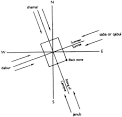
islamic-awareness.org
base of the Kaaba towards
376 × 362 - 28k - jpeg |

forum09.faithfreedom.org
the Kaaba was CLEARLY
568 × 504 - 25k - png |

en.wikipedia.org
A drawing of the Kaaba.
1280 × 853 - 114k - png |
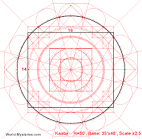
blog.world-mysteries.com
Kaaba 25 REC cube (Height = 43
759 × 743 - 33k - png |

forum09.faithfreedom.org
This image shows the Kaaba
800 × 454 - 1424k - png |

bitacoradegalileo.com
suroriental de la Kaaba,
1680 × 1050 - 69k - png |

wanttherealtruth.com
Kaaba was created 2000
325 × 301 - 22k - png |
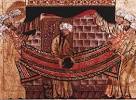
en.wikipedia.org
Kaaba - Wikipedia, the free
626 × 459 - 96k - jpg |
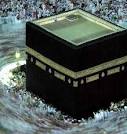
crystalinks.com
Pilgrims touching one of the
546 × 576 - 57k - jpg |

fr.wikipedia.org
Canopus α Carinae
2000 × 1311 - 1223k - jpg |
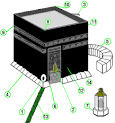
en.wikipedia.org
Kaaba - Wikipedia, the free
356 × 381 - 34k - png |

en.wikipedia.org
with visits to the Kaaba
566 × 396 - 118k - jpg |
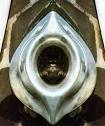
redicecreations.com
The Black Stone of Ka'aba
360 × 432 - 40k - jpg |

philipcoppens.com
The Canopus Revelation
197 × 277 - 24k - jpg |

mysteryoftheiniquity.com
God the Mother, p. 265).
441 × 478 - 50k - jpg |

ayfo.net
"Piedra Negra de la Kaaba"
211 × 239 - 10k - jpeg |

grahamhancock.com
brightest stars.
800 × 412 - 100k - jpg |
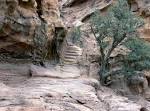
maraustralis.com
orientado hacia Canopus,
1600 × 1179 - 953k - jpg |

bibliotecapleyades.net
the geographical Canopus)
333 × 617 - 24k - jpg |

caravanserai-magazine....
The orientation of the Ka'aba.
436 × 297 - 8k - gif |
|
|
|
|
Rispondi |
Messaggio 28 di 45 di questo argomento |
|
Argo Navis
De Wikipedia, la enciclopedia libre
Argo Navis fue (y, en cierto sentido, sigue siendo) una extensa constelación en el hemisferio sur celeste que representaba el navío en que viajaron Jasón y los Argonautas de la mitología griega: Argo. Ésta es la única constelación descrita por Claudio Ptolomeo que no se reconoce en la actualidad. Por su gran tamaño (unos 1.884 grados cuadrados, más que ninguna otra), fue dividida en varias constelaciones menores por Nicolas-Louis de Lacaille en el siglo XVIII: estas son Carina (la Quilla), Puppis (la Popa), Vela (la Vela). Esta última ocupa el lugar que correspondería al mástil de la nave.
Estrellas importantes de Argo Navis[editar]

Argo Navis de Johann Bayer.
Argo Navis fue dividida por Lacaille muchos años después de que Johann Bayer le aplicara su sistema de nombrar las estrellas, en nuestros días continúa usándose su secuencia, aun cuando ya no se reconoce como una constelación. Es decir, Vela, Puppis y Carina, las constelaciones derivadas de este extenso asterismo, comparten una misma denominación de Bayer. Es por ello que tanto Vela como Puppis carecen de estrellas alfa y beta porque Alfa (α) y Beta (β) Argus Navis corresponden hoy a Alfa y Beta Carinae. Carina, por su parte, carece de estrella gamma porque Gamma (γ) Argus Navis hoy corresponde a Gamma Velorum (perteneciente a Vela). Y así sucesivamente. La leyenda cuenta que la Proa del navío causó la muerte de su antiguo capitán, Jasón al pudrirse y caerle encima cuando el barco era venerado en Corinto, ciudad de la que Jasón era el rey. Por eso en la constelación sólo se representó la popa, la vela, y la quilla, pero la proa no.
Pyxis, a diferencia de las otras tres, tiene estrellas con designación alfa, beta, gamma y demás, aun cuando sus estrellas pertenecieron antiguamente a la misma constelación de Argo Navis. Esto se debe a que, en tiempos de Bayer, las estrellas que ahora delínean a Pyxis —todas de poca brillantez— no se contaban entre las que trazaban la figura del navío. Cuando Lacaille la crea en 1756 es, entonces, que sus estrellas reciben la designación correspondiente.
Véase también[editar]
http://es.wikipedia.org/wiki/Argo_Navis |
|
|
|
Rispondi |
Messaggio 29 di 45 di questo argomento |
|
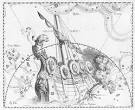
en.wikipedia.org
Argo Navis
601 × 488 - 78k - jpg |
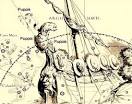
constellationsofwords.com
Argo Navis. Jason's Ship
528 × 417 - 101k - jpg |
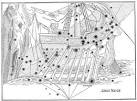
argonauts-book.com
Argo Navis, after Bayer's Star
649 × 479 - 155k - jpg |
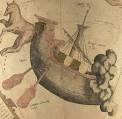
argonauts-book.com
Argo Navis by Mercator,
371 × 362 - 37k - jpg |
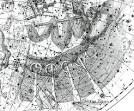
ianridpath.com
Argo.JPG
568 × 472 - 103k - jpg |

constellationsofwords.com
Argo Navis
352 × 284 - 60k - jpg |
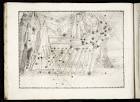
es.wikipedia.org
de Argo Navis[editar]
700 × 510 - 135k - jpg |

pa.msu.edu
Argo Navis is no longer
504 × 336 - 88k - jpg |

onemysteryless.wordpre...
Jason and the Argonauts: The
320 × 218 - 27k - jpg |

argo-navis-photo.net
Jason Fleischer. Picture
250 × 232 - 16k - jpg |

moonmentum.com
El Argo. La historia de Jasón
300 × 228 - 5k - gif |
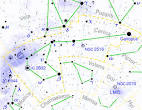
wwu.edu
Argo Navis The Ship (Carina,
771 × 599 - 93k - gif |

carlosnieto.com
Constelación de Argo Navis
386 × 480 - 165k - png |
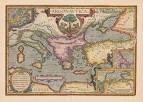
mgrazula.blogspot.com
Argo Navis represents the
800 × 572 - 160k - jpg |

tumblr.com
Argo Navis (or simply Argo) was a large constellation in the southern sky
500 × 425 - 465k - png |

moonmentum.com
constelación Argo Navis.
774 × 529 - 71k - jpg |

artworkoriginals.com
Fritz Wegner: Argo Navis the
250 × 213 - 24k - jpg |

moonmentum.com
Argo Navis fue (y,
300 × 240 - 18k - jpg |
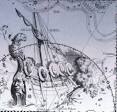
mameh.tripod.com
Argo Navis (la nave veloz) es
315 × 302 - 30k - jpg |

starrynightphotos.com
Argo Navis Constellation
800 × 533 - 76k - jpg |
|
|
|
|
Rispondi |
Messaggio 30 di 45 di questo argomento |
|

astrofotoscolombia.blo...
La Nave de Jasón ( Carina,
400 × 268 - 43k - jpg |

lunarplanner.com
Argo Navis, Canopus and Sirius
500 × 400 - 195k - png |

constellationsofwords.com
Canopus
450 × 621 - 81k - jpg |

ianridpath.com
Argo.JPG
568 × 472 - 103k - jpg |
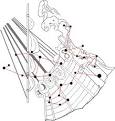
reocities.com
ARGO NAVIS in the sector
339 × 356 - 8k - gif |

argonauts-book.com
Argo Navis, after Bayer's Star
649 × 479 - 155k - jpg |

constellationsofwords.com
Argo Navis. Jason's Ship
528 × 417 - 101k - jpg |
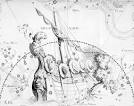
redorbit.com
Topics: Argo Navis
571 × 453 - 127k - jpg |

arsendarnay.blogspot.com
He divided Argo Navis into
1288 × 1600 - 292k - jpg |

astrofotoscolombia.blo...
es Canopus en Carina o la
1600 × 1071 - 249k - jpg |

arsendarnay.blogspot.com
If true, however, Canopus is
399 × 278 - 25k - jpg |

mgrazula.blogspot.com
Argo Navis dominates this
500 × 329 - 191k - jpg |

carlosnieto.com
Argo Navis es una embarcación
564 × 480 - 107k - jpg |

arsendarnay.blogspot.com
Canopus in Argo Navis
480 × 481 - 21k - jpg |
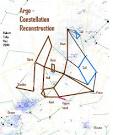
cosmoquest.org
Argo Navis Reconstruction
500 × 599 - 34k - php |

pa.msu.edu
Argo Navis was the ship used
528 × 380 - 52k - jpg |
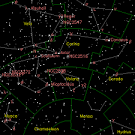
universetoday.com
of Argo Navis.
600 × 600 - 15k - gif |

redorbit.com
Topics: Argo Navis
145 × 88 - 7k - jpg |

constellationsofwords.com
argo. Urania's Mirror 1825
494 × 364 - 88k - jpg |

argonauts-book.com
Argo Navis by Mercator,
371 × 362 - 37k - jpg |
|
|
|
 Primo Primo
 Precedente
16 a 30 de 45
Successivo Precedente
16 a 30 de 45
Successivo Ultimo
Ultimo
|









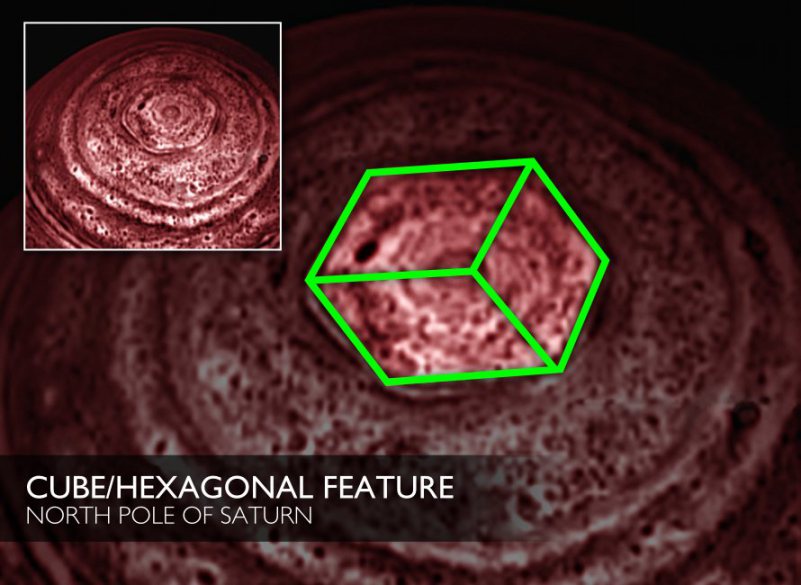






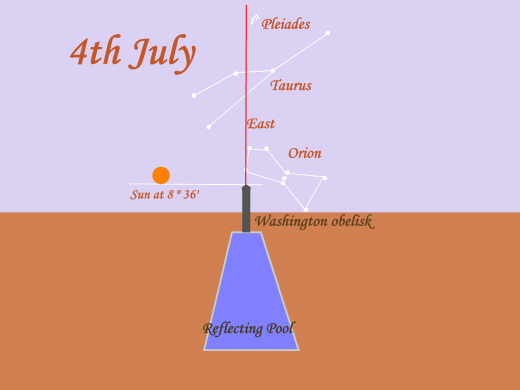



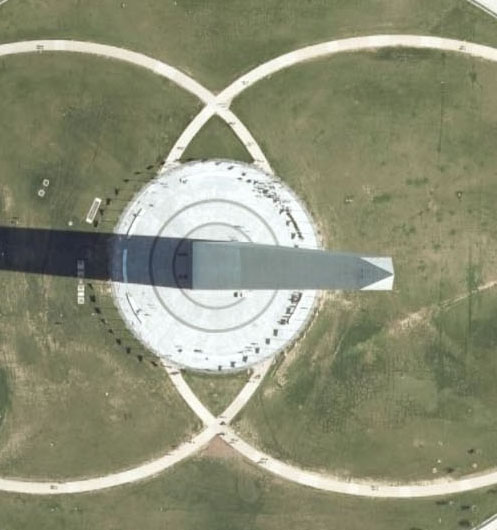

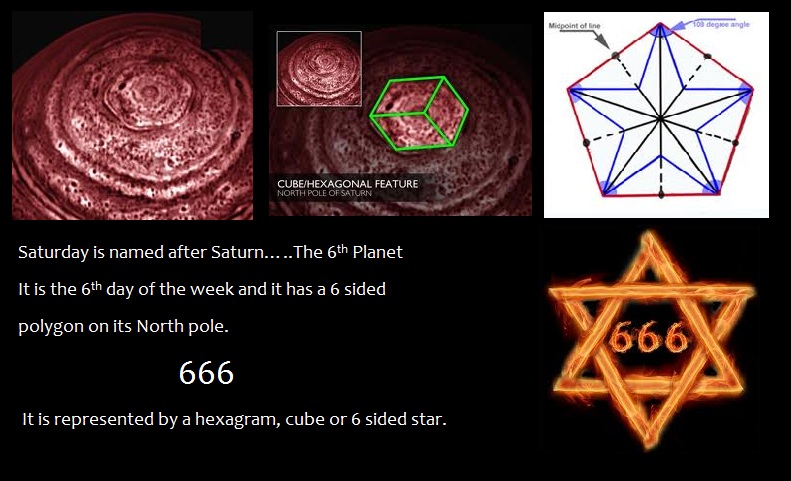

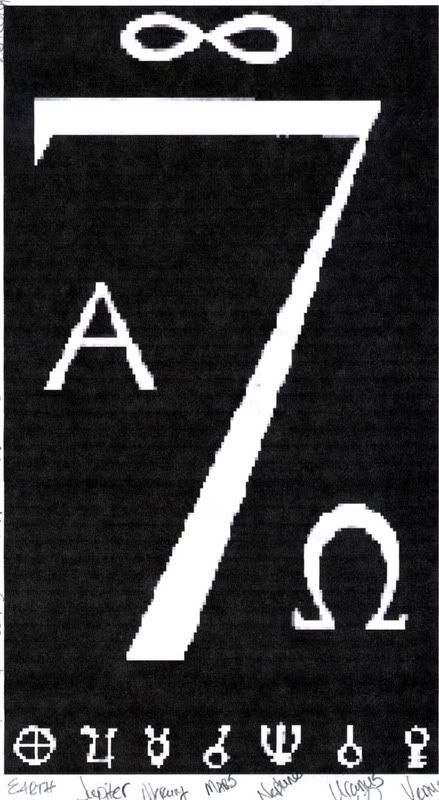


.jpg)


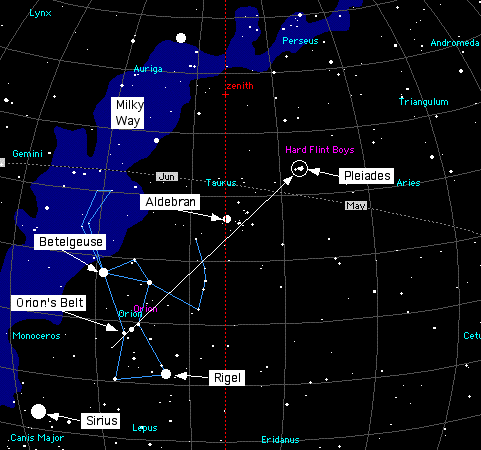

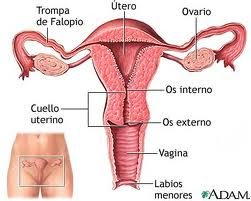






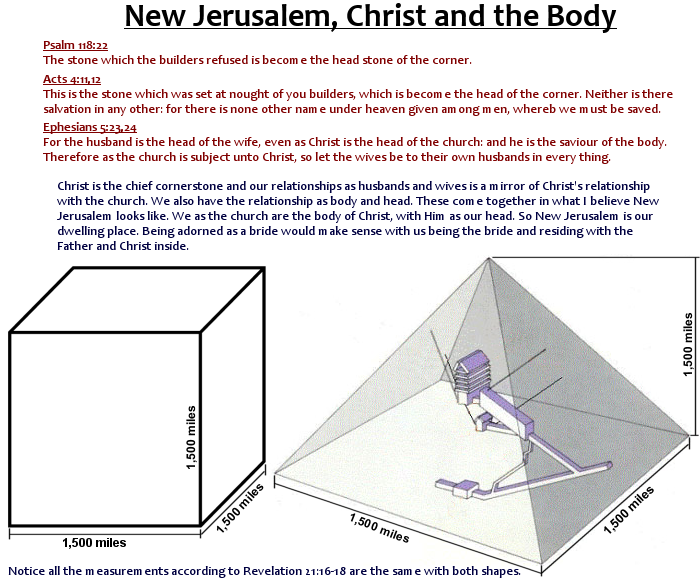

 Most ancient civilisations created a centre for each city, but equally had a “national centre”, which acted as a “central centre”. Authors such as Jean Richer have argued that Greek city planning, i.e. the location where certain towns would be built, is partially linked with trying to maintain a “master plan”, incorporating this “central centre” from which other centres radiate. He believes that the Greeks were aware of a meridian, and that this was “centred” on Mount Olympos, the place where the gods were said to reside.
Most ancient civilisations created a centre for each city, but equally had a “national centre”, which acted as a “central centre”. Authors such as Jean Richer have argued that Greek city planning, i.e. the location where certain towns would be built, is partially linked with trying to maintain a “master plan”, incorporating this “central centre” from which other centres radiate. He believes that the Greeks were aware of a meridian, and that this was “centred” on Mount Olympos, the place where the gods were said to reside.  The Nile, identified with the god Hapi, who was a characteristic of Osiris, might also have been interpreted with the Djed pillar and the Cosmic Tree. The Nile was literally the “spine” of Egypt: it was the backbone of communication; if the Nile would no longer be the prime method of communication, Egypt would literally become paralysed.
The Nile, identified with the god Hapi, who was a characteristic of Osiris, might also have been interpreted with the Djed pillar and the Cosmic Tree. The Nile was literally the “spine” of Egypt: it was the backbone of communication; if the Nile would no longer be the prime method of communication, Egypt would literally become paralysed.  Space was divided into two halves to create the meridian, but it seems that most cultures then halved space in the other direction. The end result is two lines intersecting at one point: the sign of the cross. The centre was a crossing, a singularity, where in most cultures we find the primeval hill, or the Mound of Creation. This was itself a point from which the gods were said to ascend, or sit – as in the case of Mount Olympos.
Space was divided into two halves to create the meridian, but it seems that most cultures then halved space in the other direction. The end result is two lines intersecting at one point: the sign of the cross. The centre was a crossing, a singularity, where in most cultures we find the primeval hill, or the Mound of Creation. This was itself a point from which the gods were said to ascend, or sit – as in the case of Mount Olympos.  According to Stecchini, the Gizeh plateau may have been the “prime primeval hill” of Egypt. But that is not all. Stecchini further claimed that a number of locations throughout the ancient world were located in exact geodetic relation to the longitude meridian of the Great Pyramid.
According to Stecchini, the Gizeh plateau may have been the “prime primeval hill” of Egypt. But that is not all. Stecchini further claimed that a number of locations throughout the ancient world were located in exact geodetic relation to the longitude meridian of the Great Pyramid. 

